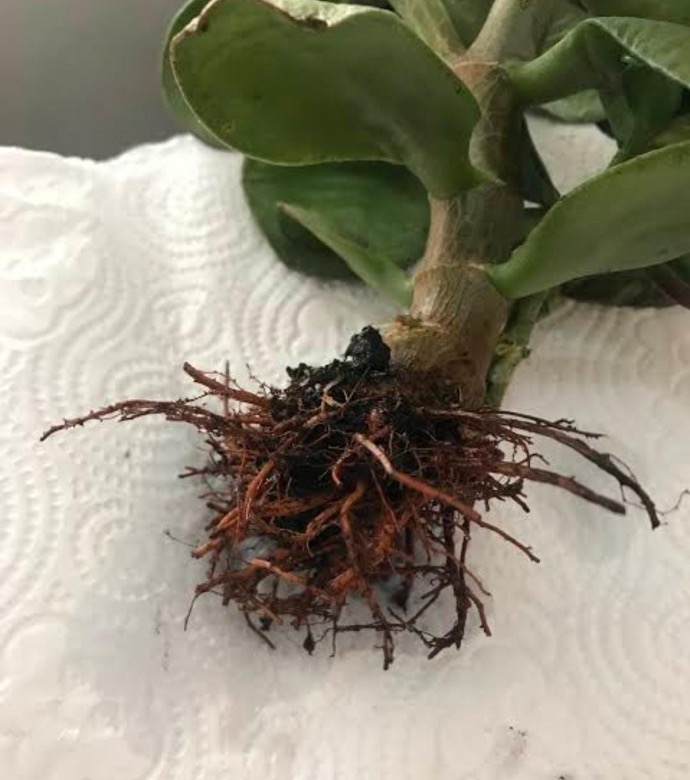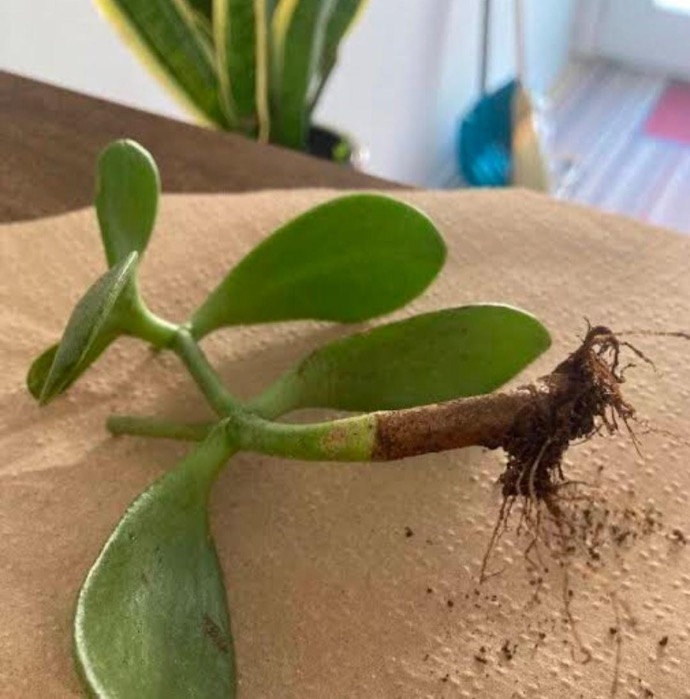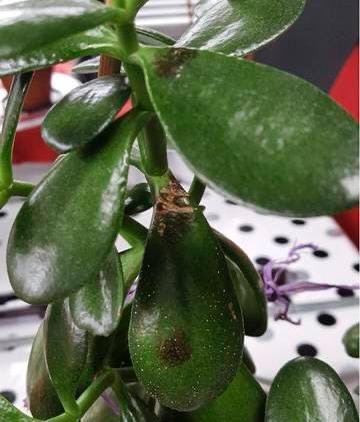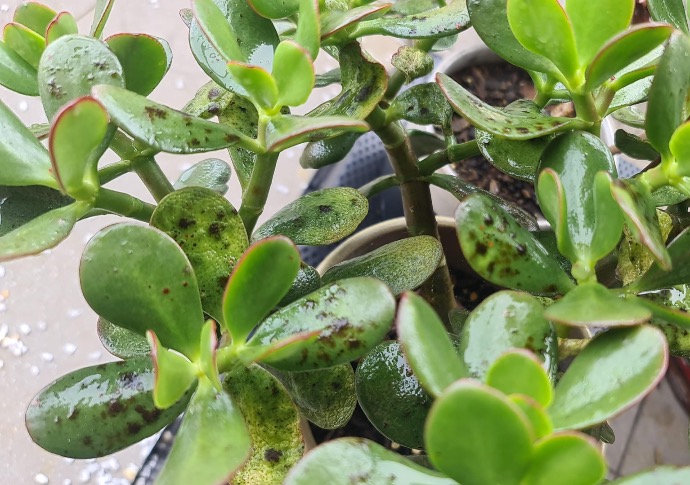Jade Plant
Jade Plant, also known as Crassula ovata, is an indoor succulent. Plant in well-draining soil and provide bright, indirect light. Allow the soil to dry between waterings. Pruning can be done to shape the plant and remove any damaged or leggy stems.
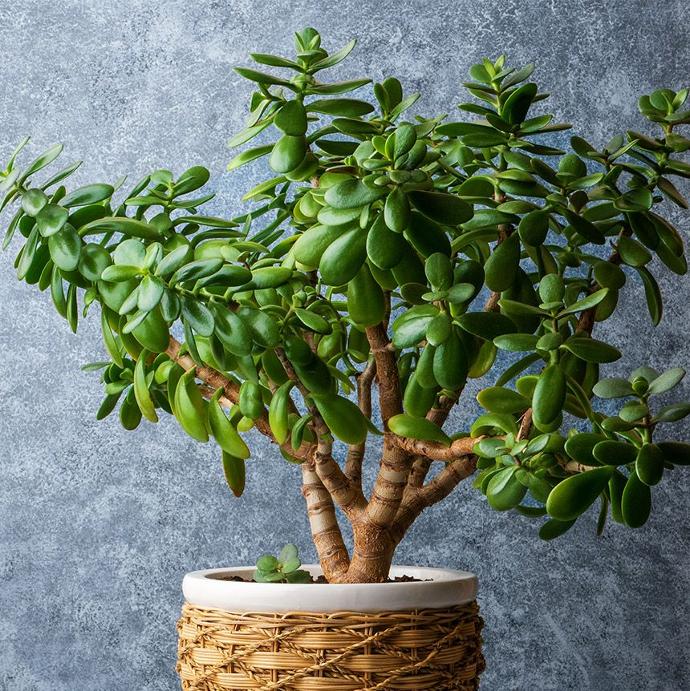
Habit
Shrub
Height
0.3 to 0.6 m
Growth
Slow
Soil
Well Drained, Sandy-loam
Shade
Full Sun
Moisture
Moist
Edible
Yes
Medicinal
Yes
Flowering Time
Partial shade
Soil Ph level
Moderate
Water Ph level
No
Soil EC
Yes
Origin
South Africa
Climatic Condition
Subtropical, Temperate
Temperature (°)
15°C to 25°C
Humidity (%)
50% to 60%
Potting media
50% Sand, 40% Loam, 10% Compost
Fertilizers
Organic Fertilizer
Watering
Minimal watering
Plant Weight
0.5 to 1.0 kg
Flowering Time
Spring to Fall
Soil Ph level
6.0 to 7.0
Water Ph level
6.0 to 6.5
Soil EC
0.4 to 0.8 mS/cm
Yield Per Plant
1 to 2 kg per plant
NPK ratio
10:10:10
life Span
5 to 10 years
Health Benefits
Ornamental, Stress Relief
Suggested Grow Media or Potting Mix ?
50% cactus mix, 25% perlite, 25% sand
Suggested Fertigation/Fertilizers
Fertilize every 6 weeks with a balanced, low-nitrogen fertilizer.
Common Diseases and Remedies
Black Ring Disease , Bacterial Soft Rot , Root Rot .
Black Rings or Spots on Leaves , Yellowing of Leaves , Leaf blade turn black .
NSKE , Neem Oil .
HEALTH BENEFITS
· Used in traditional Chinese medicine for diabetes
· Has wound-healing properties
· Some varieties contain anti-inflammatory compounds
What Is An Jade Plant ?
The Jade Plant, scientifically known as Crassula ovata, is a popular succulent that belongs to the Crassulaceae family. It is native to South Africa but is cultivated and enjoyed as a houseplant worldwide. The Jade Plant is often referred to by various names, including Money Plant, Friendship Tree, Lucky Plant, or simply Jade. The Jade Plant is appreciated not only for its attractive appearance but also for its symbolism and the ease with which it can be grown and propagated. Many people enjoy having Jade Plants as part of their indoor plant collections.
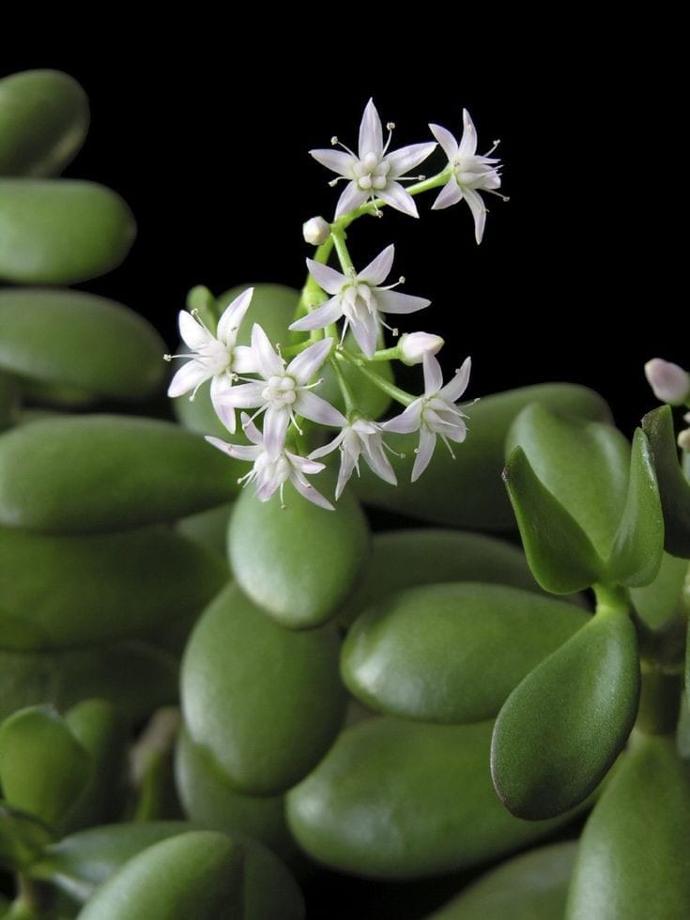
What Are The Different Types Of Areca Palm Plants?
1. Crassula ovata 'Classic' or 'Hobbit'
This variety has tubular, trumpet-shaped leaves that are rolled back at the tips, creating a distinctive appearance.
2. Crassula ovata 'Gollum'
Similar to the 'Hobbit,' the 'Gollum' Jade Plant has elongated, tubular leaves with a reddish tint. The leaves are more curved and resemble the character Gollum from "The Lord of the Rings."
3. Crassula ovata 'Tri-colour'
As the name suggests, this variety displays a combination of three colours on its leaves—green, pink, and cream. The variegation adds an extra layer of visual interest.
4. Crassula ovata 'Sunset'
'Sunset' has vibrant, sunset-like hues on the leaf margins, ranging from red to orange. The inner parts of the leaves remain green. This variety is known for its striking coloration.
5. Crassula ovata 'Blue Bird'
'Blue Bird' has blue-green leaves with a hint of purple. The compact growth habit and unique leaf colour make it a popular choice among Jade Plant enthusiasts.
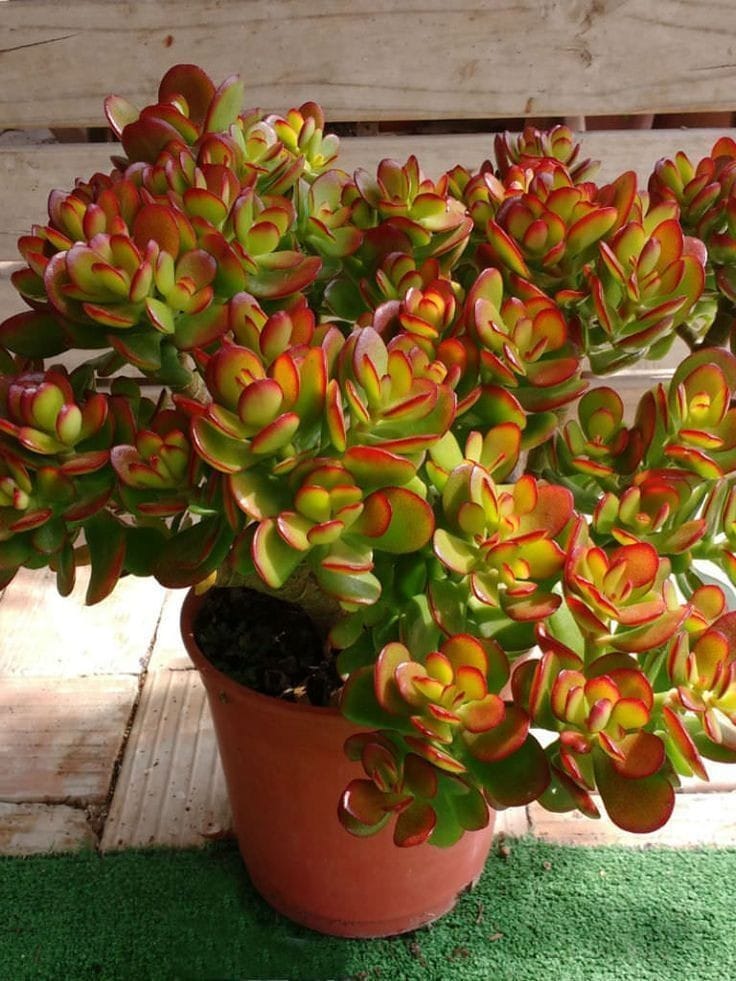
How to care Jade Plants ?
1. Location
Jade Plants (Crassula ovata) can be grown both indoors and outdoors. When grown indoors, place them in bright, indirect sunlight and use well-draining succulent soil. Water sparingly and ensure proper drainage. Outdoors, plant them in well-draining soil with partial sunlight to full sun exposure. Provide protection from frost, especially in colder climates. Adjust watering frequency based on environmental conditions.
2. Sunshine
Provide bright, indirect sunlight for optimal growth. Jade Plants can tolerate some direct sunlight but may scorch in intense, prolonged exposure. Adjust sunlight exposure based on the season. Provide more sunlight during the active growing season and reduce exposure in winter.
3. Soil
Use well-draining succulent or cactus mix. Ensure the pot has drainage holes to prevent waterlogged conditions, which can lead to root rot.
4. Hydration
Allow the soil to dry out between watering sessions. Water sparingly, especially in winter when the plant is in a semi-dormant state. Overwatering is a common issue with Jade Plants.
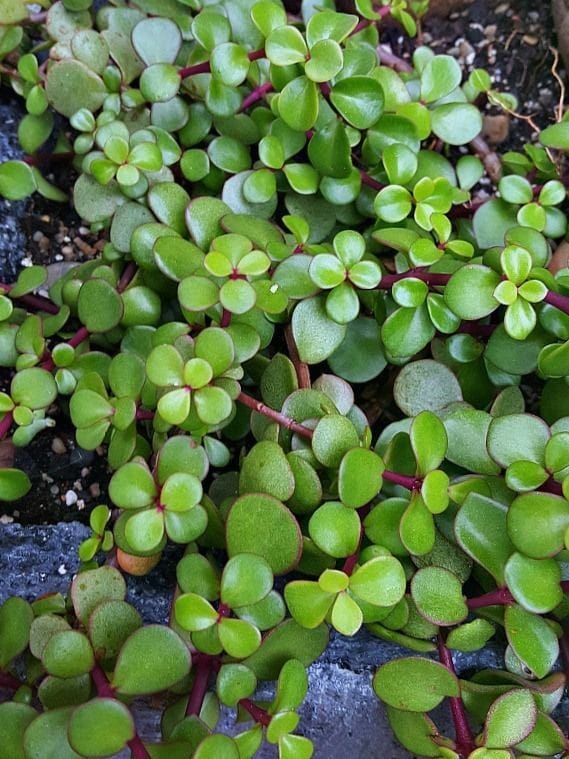
5. Nourishment
Jade Plants (Crassula ovata) generally benefit from a balanced fertilizer with a relatively equal NPK (Nitrogen, Phosphorus, Potassium) ratio, such as 10-10-10 or 14-14-14. This provides essential nutrients in a balanced manner to support overall growth and health. However, for succulents like Jade Plants, it's important not to over-fertilize. During the active growing season (spring and summer), you can apply a diluted liquid fertilizer every 2-4 weeks. In fall and winter, when the plant is less active, reduce or eliminate fertilization. Always follow the specific product instructions and adjust based on the needs of your individual plant.
6. Issues
Common issues with Jade Plants include overwatering, which can lead to root rot; ensure the soil dries between waterings. Inadequate drainage may cause root problems, so use well-draining succulent soil. Insufficient light results in leggy growth; provide bright, indirect sunlight. Pests like aphids and mealybugs can be treated with insecticidal soap or neem oil. Over-fertilizing can harm the plant; use a balanced fertilizer sparingly during the growing season. Protect Jade Plants from frost, as cold temperatures can cause damage. Diseases such as root rot may arise from excessive moisture, so ensure proper ventilation and avoid overwatering. Leggy growth may indicate insufficient sunlight; adjusting the light conditions can encourage more compact growth. Addressing these issues promptly will help maintain the health of your Jade Plant.
What are the Benefits of Jade Plants ?
Like other houseplants, Jade Plants contribute to indoor air quality by absorbing carbon dioxide and releasing oxygen. While not as efficient as some other plants, they still provide some air-purifying benefits. While not a primary use, some cultures incorporate Jade Plant leaves in traditional dishes. Additionally, certain compounds in the plant may have medicinal properties, although caution is advised in using them for this purpose. Jade Plants can adapt to different light conditions and are suitable for both indoor and outdoor settings. They tolerate a range of temperatures and are hardy plants.
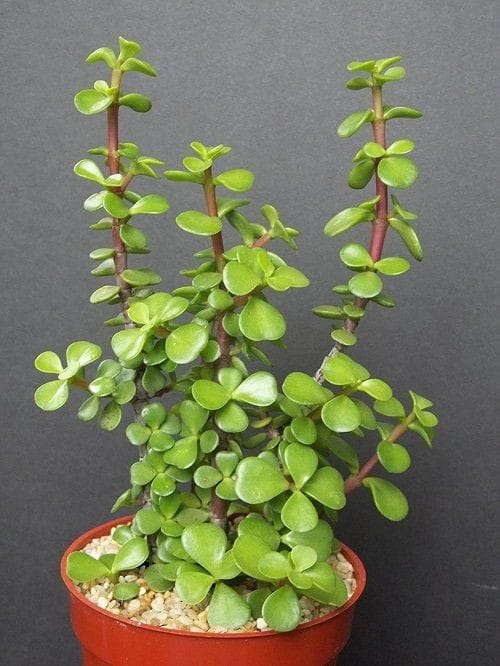
FAQs About Growing Jade Plants
1. What type of soil is best for Jade Plants?
Use well-draining succulent or cactus mix to prevent waterlogging. Good drainage is crucial to prevent root issues.
2. Why are the leaves on my Jade Plant turning yellow?
Yellowing leaves can indicate overwatering or poor drainage. Adjust your watering practices and ensure proper drainage to address this issue.
3. Can I keep my Jade Plant outdoors?
Yes, Jade Plants can be grown outdoors in partial to full sun. Protect them from frost, especially in colder climates.
4. How do I fertilize my Jade Plant?
Use a balanced, diluted liquid fertilizer during the growing season (spring and summer) every 2-4 weeks. Reduce or stop fertilizing in fall and winter.
5. Is it normal for my Jade Plant to drop leaves?
Some leaf drop is normal, especially in response to changes in environment or seasonal variations. However, excessive leaf drop may indicate a problem with watering or light conditions.
